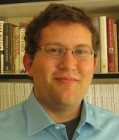What Emotional Politics More than a Century Ago Says about Winning U.S. Elections Today
Emotional politics based in rousing rallies was front and center in the 2016 election – marking the resurgence of an electioneering style that dominated politics for a time following the 1896 campaign of William Jennings Bryan. By the 1920s, this style receded in the face of professionally devised mass media advertising. But it is now making a comeback. The 2016 campaigns of both Donald Trump and Bernie Sanders used emotional, rally-based politics to stunning effect, outperforming dollar for dollar the advertising-based strategies of their opponents. Emotional approaches today are proving to be a low-cost way to increase supporter intensity and voter turnout.
Emotional Politics in American History
Before the 1870s, U.S. presidential candidates were expected to be emotionally remote from voters in order to avoid being unduly influenced by them. Presidential contenders did not campaign for office at all and had little contact with voters; the party organizations ran the campaigns instead. As my research shows, in the late 19th century many candidates adopted a new, uniquely emotional style of public speaking known as “personal magnetism.” The most successful of these candidates, William Jennings Bryan, won the 1896 Democratic presidential nomination largely on the strength of a single charismatic speech at the national convention. Bryan earned 47 percent of the general election vote and went on to be nominated two more times. Charismatic candidates like Bryan took advantage of the nation’s new railroad network to travel the country, giving hundreds of short speeches to groups of voters. These speaking tours were organized in a specific way: after a brass band warmed up the audience, the candidate delivered an inspiring, emotionally-charged speech. At the end, the candidate would shake hands with as many voters as possible. Essentially, these charismatic speaking tours pioneered the modern candidate-centered political rally.
It is unclear whether emotional politics expanded the electorate or increased votes for candidates such as Bryan. What emotional politics clearly accomplished was to intensify the commitment of voters who were already inclined to support a particular candidate. Democratic voters who wrote to Bryan compared him to Moses and Jesus Christ. So many of them wrote to announce that they had named their children after him that the campaign had to assign Bryan’s daughter the job of responding to their letters. This fervent supporter commitment fueled a nationwide army of extremely motivated campaign volunteers, many of whom gave up their jobs to volunteer full-time for Bryan. Traditional candidates who relied on party apparatus to sustain their campaigns did not receive such support. Bryan’s large numbers of volunteers helped offset his five-to-one financial disadvantage in 1896; despite this financial disparity, he lost by fewer than four points.
Charismatic politics changed the culture of U.S. leadership by bringing ordinary Americans more directly into the election process. Charismatic candidates such as Bryan were only successful when they made themselves emotionally available to their supporters and tailored policies to voter demands. Ever since, candidates have had to shake hands, kiss babies, give speeches, and actively court voter support in order to win elections.
Despite its considerable effectiveness, however, magnetic speaking and in-person rallies faded with the advent in the 1920s of professional campaigns using mass media advertising. For many decades, campaigns using the new advertising strategies defeated candidates who favored emotional speeches at rallies. In 2016, however, Trump and Sanders drew record rally crowds and were able to outperform less charismatic candidates using the usual advertising tactics.
Why Emotional Politics is a Useful Modern Political Strategy
In the current era of U.S. partisan polarization, there are few undecided voters, so campaigns succeed largely by intensifying the commitment of voters who already lean toward a party or candidate. Emotional campaigns aim to create an intensity gap – making the voters who lean toward their side more active and engaged than those who lean toward the opposition. Just as in 1896, charismatic campaign rallies are the best way to energize supporters. Although media advertising may reach more people, its influence is diffuse. Citizens inspired and energized by a rally and handshakes are more likely to volunteer and actually vote. Indeed, contrary to what many presume, an emotional style can be especially effective in state and local races, where a few inspired volunteers can make a big difference.
Modern Approaches to Emotional Politics
There are a number of ways today’s strategists can adapt the emotional approaches of the past:
- Focus campaigns on emotional appeals rather than policy arguments. Educating voters about policy may build support in principle, but emotional appeals do more to inspire action.
- Help candidates become more charismatic. Consultants can help candidates deploy their own personalities to move and inspire voters. In the most effective political theater, candidates appear unscripted and authentic – and look for opportunities to mirror the emotions of their constituents, their anger, frustrations, and hopes.
- Feature candidate-centered rallies. Following the 19th-century formula, effective rallies should start with a musical performance and move to a charismatic candidate speech followed by handshakes with as many voters as possible.
- Use media to spread charismatic images. To gain media attention and small-dollar donations, all contact between the candidate and voters should be videotaped, repackaged online, and promoted via social media.
Emotional politics is the future as well as the past of American politics. By studying lessons from the turn of the last century, political strategists can expand the map of competitive races, increase voter turnout, and gain an army of committed volunteers. This approach can make political campaigns more cost-efficient – and more successful.
Read more in Jeremy C. Young, The Age of Charisma: Leaders, Followers, and Emotions in American Society, 1870-1940 (Cambridge University Press, 2017).
